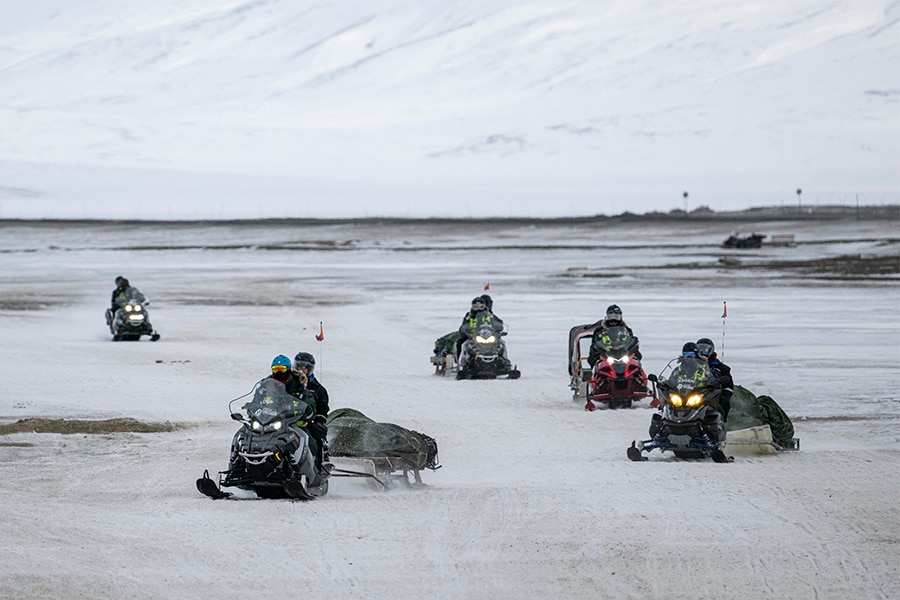
Snowmobiles in slush? Sports on thin ice in the warming Arctic
All aspects of sport and recreation on Svalbard feel the impact of a warming climate, from dogsledding to snowmobiling to skiing, fishing, hunting and glacier climbing. Snow melts two or three weeks earlier than it did 30 years ago
 Tourists come back to Longyearbyen after a tour on snow mobiles, on May 8, 2022, on Spitsbergen island, in Svalbard Archipelago, northern Norway. Image: Jonathan NACKSTRAND / AFP
Tourists come back to Longyearbyen after a tour on snow mobiles, on May 8, 2022, on Spitsbergen island, in Svalbard Archipelago, northern Norway. Image: Jonathan NACKSTRAND / AFP
LONGYEARBYEN, Norway — It was early April, and while the midnight sun had not yet arrived on the remote archipelago of Svalbard, darkness had begun its annual four-month retreat from the world’s northernmost town. On a cold, pristine morning, sled dogs with their thick coats and powerful legs began a howling chorus as they set off into a snowy valley of reindeer, grouse and distressed grandeur.
Svalbard, between mainland Norway and the North Pole, offers one of the world’s most isolated and arresting wildernesses. The northern lights dance to an electromagnetic rave party. Mountains dive into fjords as if to go swimming, their bases shaped like the wide paws of polar bears. Arctic foxes skitter with the herky-jerky motion of silent movies.
“Beautiful, extreme, vulnerable,” Nico Mookhoek, 34, a guide for Green Dog Svalbard, said on a six-hour sled trip down the Bolter Valley to visit a melting glacier and an ice cave.
Wistfulness underlies beauty on Svalbard, where the coal industry is giving way to tourism and to research into climate change caused by the emission of carbon dioxide and other heat-trapping gases. Since the early 1990s, these islands near the top of the world have warmed more than twice as quickly as the rest of the Arctic and about seven times the global average, according to the Norwegian Polar Institute.
All aspects of sport and recreation on Svalbard feel the impact of a warming climate, from dogsledding to snowmobiling to skiing, fishing, hunting and glacier climbing. Snow melts two or three weeks earlier than it did 30 years ago. A ski hill planned for next year in Longyearbyen will use artificial snow to make the course more reliably available.
©2019 New York Times News Service




